Uncover the intriguing theories surrounding ancient Egyptian electricity, including the enigmatic Dendera Light and the Baghdad Battery. Explore the debate over these claims, why they remain speculative, and how Egyptian ingenuity achieved astonishing feats using traditional methods.
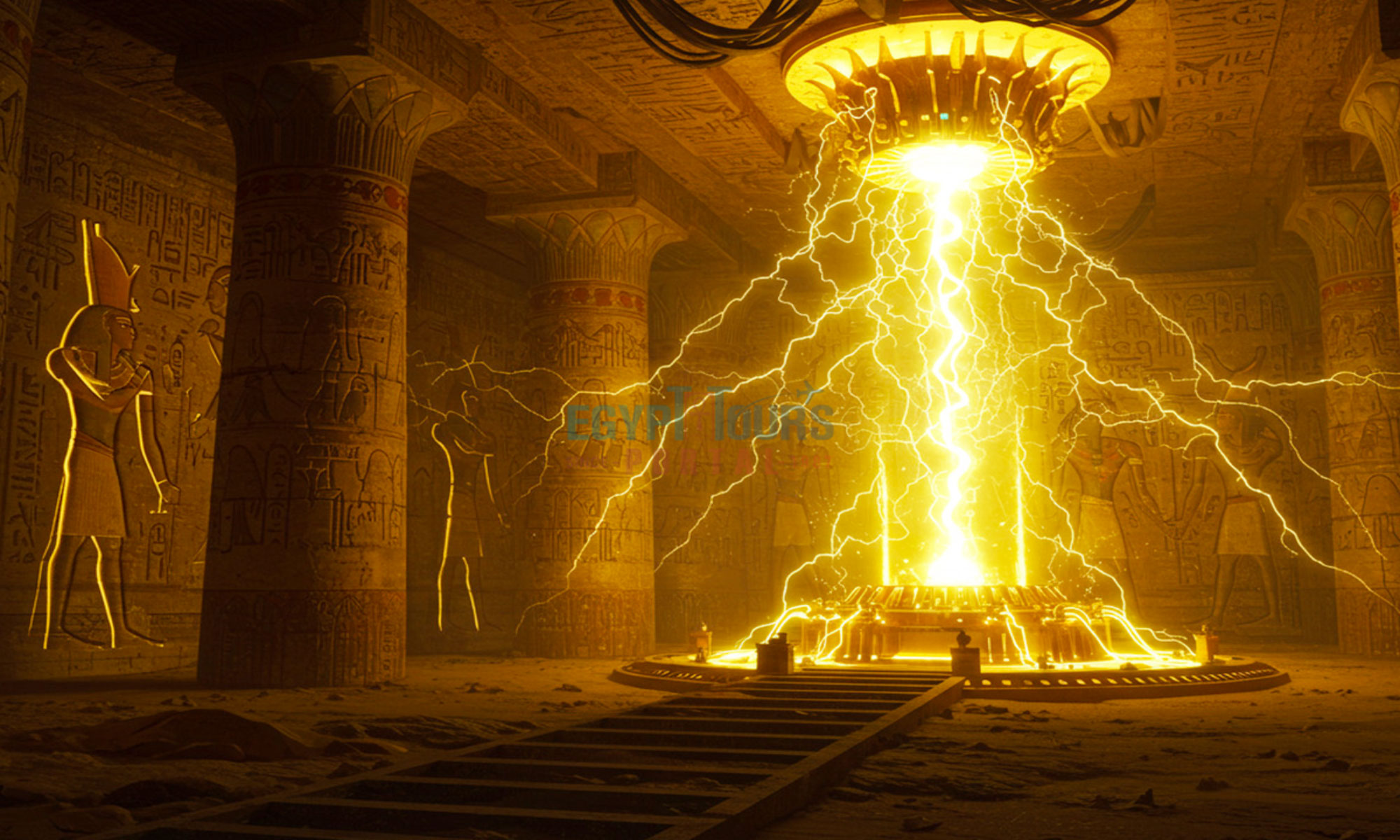
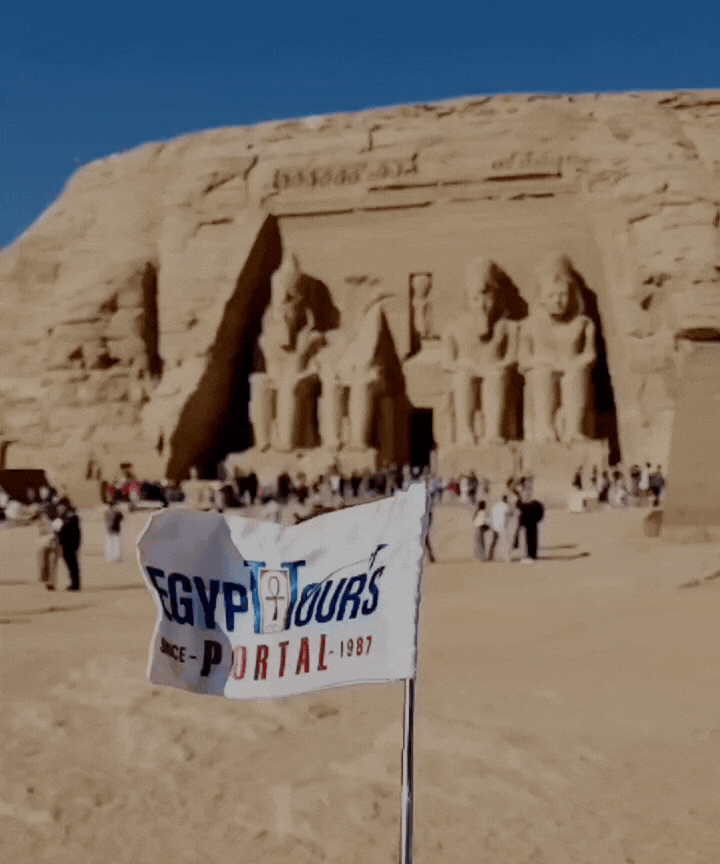
Ancient Egyptian electricity captivates the imagination as it merges the allure of a highly advanced civilization with the mystery of its monumental achievements. From the iconic pyramids of Giza to the intricate carvings in the Temple of Hathor at Dendera, speculative theories propose that the Egyptians may have harnessed electrical energy long before its "official" discovery in modern history.
Claims about the Dendera Light, the Ark of the Covenant, and other enigmatic artifacts suggest that ancient Egypt was not just a cradle of civilization but also a hub of forgotten technology. While these ideas remain controversial, examining the evidence and interpretations can shed light on the innovative spirit of the ancient Egyptians and the boundaries of their technological capabilities.
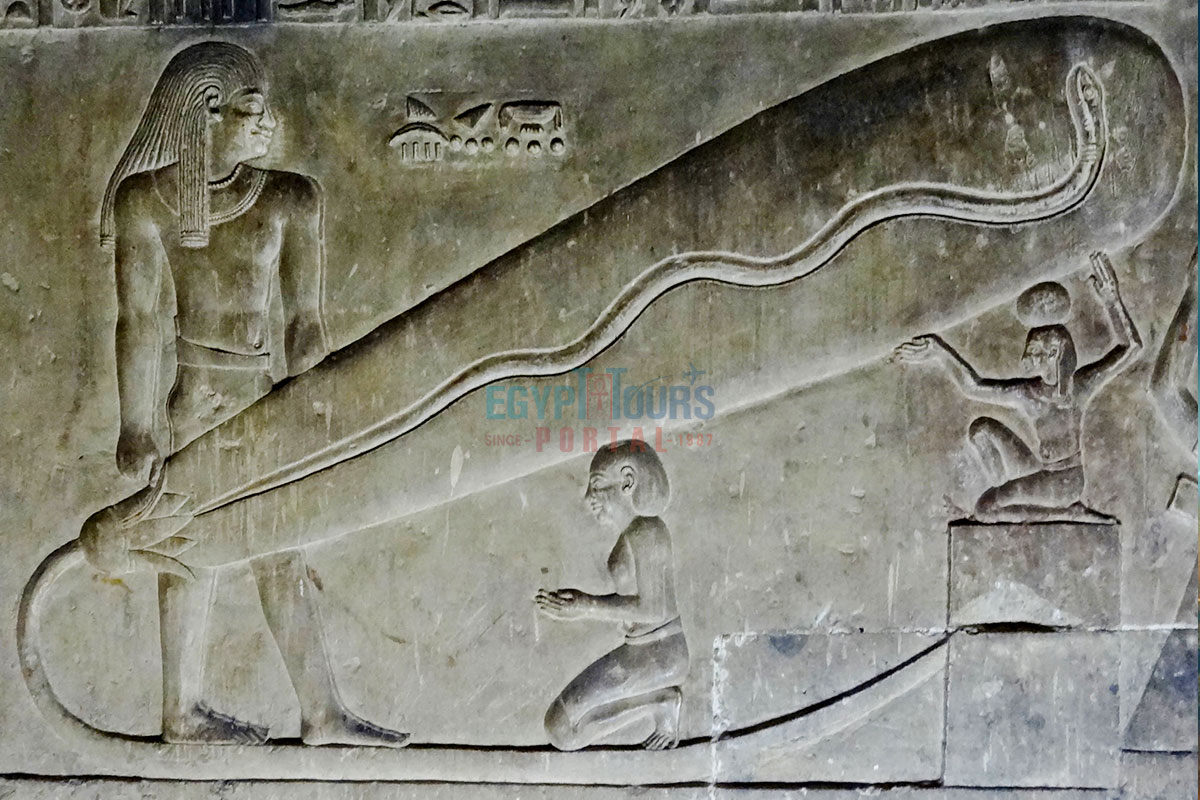
The "Dendera Light" hypothesis arises from carvings in the Temple of Hathor at Dendera, dated to the late Ptolemaic Period (c. 225 BCE). These carvings depict what some interpret as oversized light bulbs, with a snake-like figure enclosed within a lotus-shaped “bulb” and connected to a base resembling a socket or pedestal. This imagery is accompanied by human figures holding or interacting with the objects.
Proponents of the theory, such as Erich von Däniken in his 1968 book Chariots of the Gods, argue that these carvings represent advanced technology, such as electric lamps powered by an ancient energy source. They cite the apparent cables extending from the bulbs as evidence of electrical wiring and propose that the devices were powered by mechanisms akin to the Baghdad Battery.
Mainstream Egyptologists, however, interpret the reliefs as symbolic religious motifs. The so-called “bulb” is understood to represent a lotus flower, from which the snake, is interpreted as the symbol of creation and the sun god Ra, who emerges. This aligns with the Egyptian creation myths and cosmological beliefs. The cable-like structures are seen as symbolic stems, and the depictions reflect a sacred narrative rather than technological artifacts.
Despite the intrigue surrounding the Dendera reliefs, there is no physical evidence of electrical devices, wiring, or lighting infrastructure in ancient Egyptian archaeological records. Scholars emphasize the importance of interpreting such artifacts within the cultural and historical context of the time.
The absence of soot on the ceilings of tombs and temples, often cited as evidence for electric lighting, has alternative explanations. For instance, reflected sunlight or mirrors could have illuminated these spaces. Additionally, torches and oil lamps with efficient ventilation would have minimized soot buildup.
Skepticism also arises from the speculative nature of the electrical lamp theory. Egyptologists caution against imposing modern interpretations on ancient artifacts without robust evidence, arguing that such claims often stem from a lack of understanding of symbolic and artistic conventions in ancient Egyptian culture.
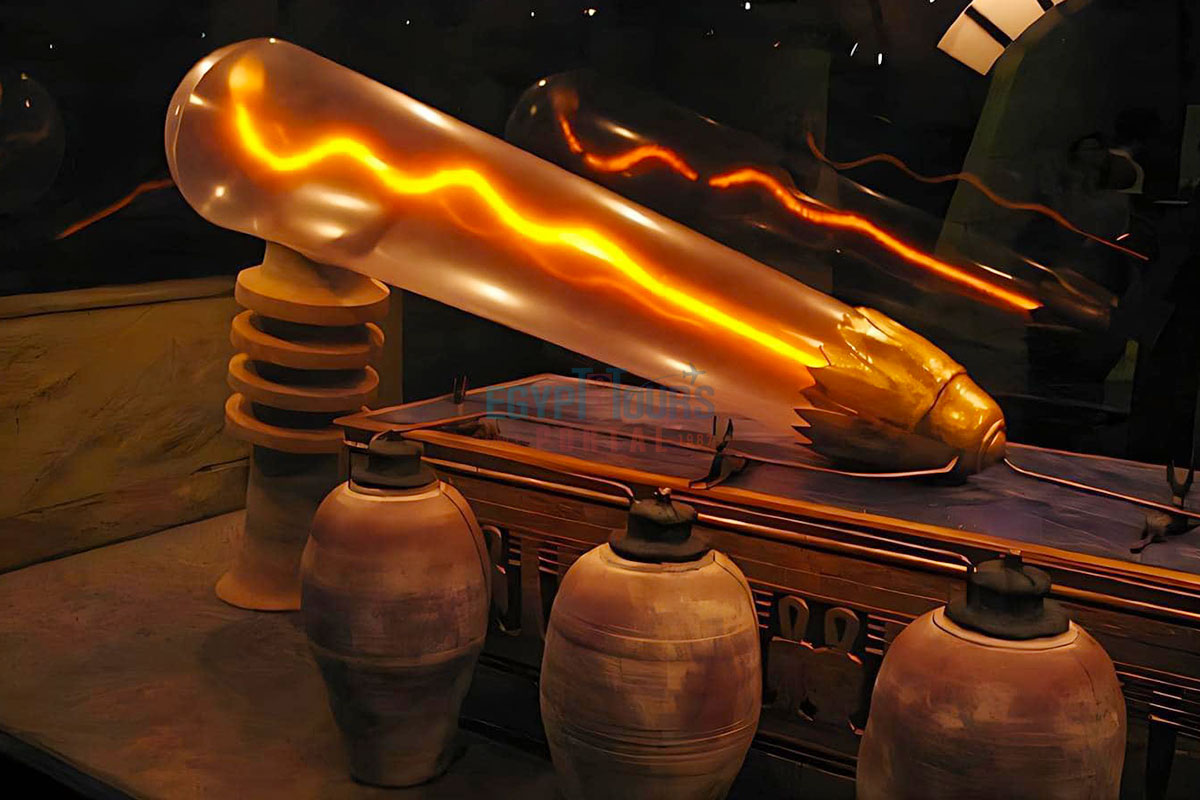
The Baghdad Battery was discovered in 1938 by Wilhelm König near Khujut Rabu in modern-day Iraq. The artifact dates to the Parthian period (c. 250 BCE–224 CE) and consists of a clay jar containing a copper cylinder and an iron rod. When filled with an acidic substance like vinegar or fermented grape juice, the jar can generate a small electric current, estimated at 0.8–1.1 volts.
König initially theorized that the device was used for electroplating gold onto silver objects, a technique known to have existed in antiquity. Although no direct evidence links the Baghdad Battery to widespread technological applications, its discovery is often cited as proof that ancient cultures possessed rudimentary electrical knowledge.
Claims connecting the Baghdad Battery to ancient Egyptian technology focus on electroplating techniques. Ancient Egyptian artifacts, particularly jewelry, often display intricate gold plating, leading some to speculate that similar galvanic processes might have been used. However, no Baghdad-style batteries or similar devices have been unearthed in Egypt.
Theories linking the two civilizations remain speculative, as the Egyptians typically employed mechanical gilding methods, such as fire gilding or hammering gold leaf onto surfaces.
While the Baghdad Battery demonstrates ancient experimentation with electricity, its connection to Egyptian technology is tenuous. The technological environments of Mesopotamia and Egypt were distinct, and no direct evidence suggests the transfer of electrical knowledge between the two regions.
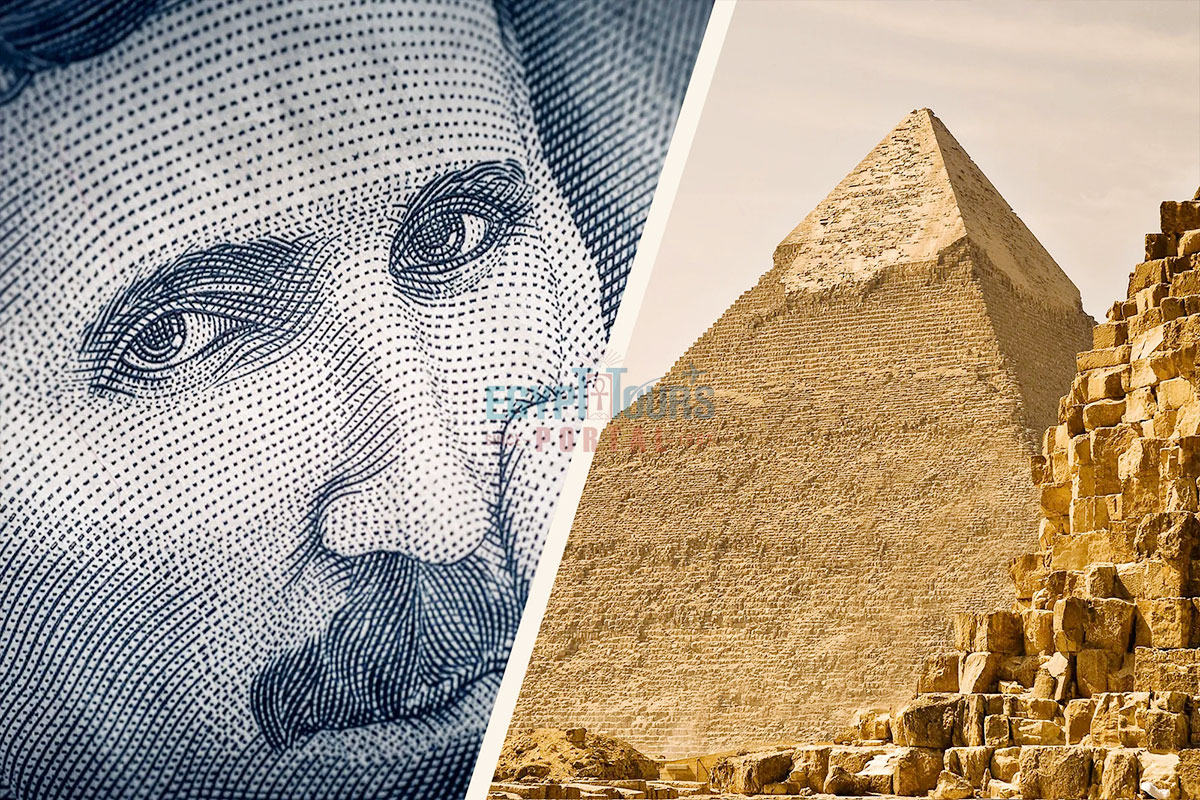
Nikola Tesla (1856–1943), a Serbian-American inventor, revolutionized the field of electricity with his development of alternating current (AC) systems. Tesla’s most ambitious idea was wireless electricity—a system for transmitting power through the air without wires. In the early 1900s, he conducted experiments at his Colorado Springs laboratory and later at Wardenclyffe Tower in New York.
Tesla aimed to create a global network using resonant frequencies and electromagnetic waves to transmit energy over long distances. Tesla’s wireless electricity system relied on a combination of high-frequency transformers, such as the Tesla Coil, and earth-grounded towers that could amplify and radiate electromagnetic energy. His vision was a world where clean, renewable energy was universally accessible, reducing reliance on fossil fuels.
Proponents of alternative theories suggest that ancient structures, particularly the Egyptian pyramids and obelisks, were designed to harness and transmit electrical energy, similar to Tesla’s wireless systems. The Great Pyramid of Giza, built during the Fourth Dynasty (c. 2580–2560 BCE), is often central to these claims. Its construction using limestone and granite—materials with conductive and piezoelectric properties—has fueled speculation that the pyramid acted as a massive energy generator.
Theories propose that the pyramid’s internal structures, such as the King’s Chamber and the shafts leading to the exterior, could have functioned as conduits for energy transmission. Critics argue that such ideas are speculative, citing a lack of evidence for energy storage or distribution mechanisms. The pyramid’s documented role as a royal tomb, supported by extensive archaeological findings, contradicts the energy generator hypothesis.

The hypothesis that ancient Egyptians used electricity, whether for illumination or advanced technology, remains unsubstantiated. No artifacts resembling batteries, generators, or wiring systems have been found in Egyptian archaeological sites. Claims about electric lighting in Egyptian tombs or Egyptian temples often misinterpret symbolic art, such as the Dendera reliefs.
The absence of physical evidence and historical documentation supporting the use of electricity underscores the speculative nature of these claims. Mainstream scholars emphasize that the ancient Egyptians achieved remarkable feats with the technologies and resources available to them, without the need for modern analogs like electricity.
Ancient Egypt’s achievements in construction, metallurgy, and engineering are well-documented. They pioneered techniques in stone quarrying and transport, as evidenced by the construction of massive monuments like the pyramids. Advances in metallurgy allowed for the production of high-quality bronze tools and intricate goldsmithing. These accomplishments reflect the ingenuity of ancient Egyptian craftsmen, achieved through methods consistent with the technological limitations of their time.
Learn the captivating details about the innovations of the Ancient Egyptians.
Read More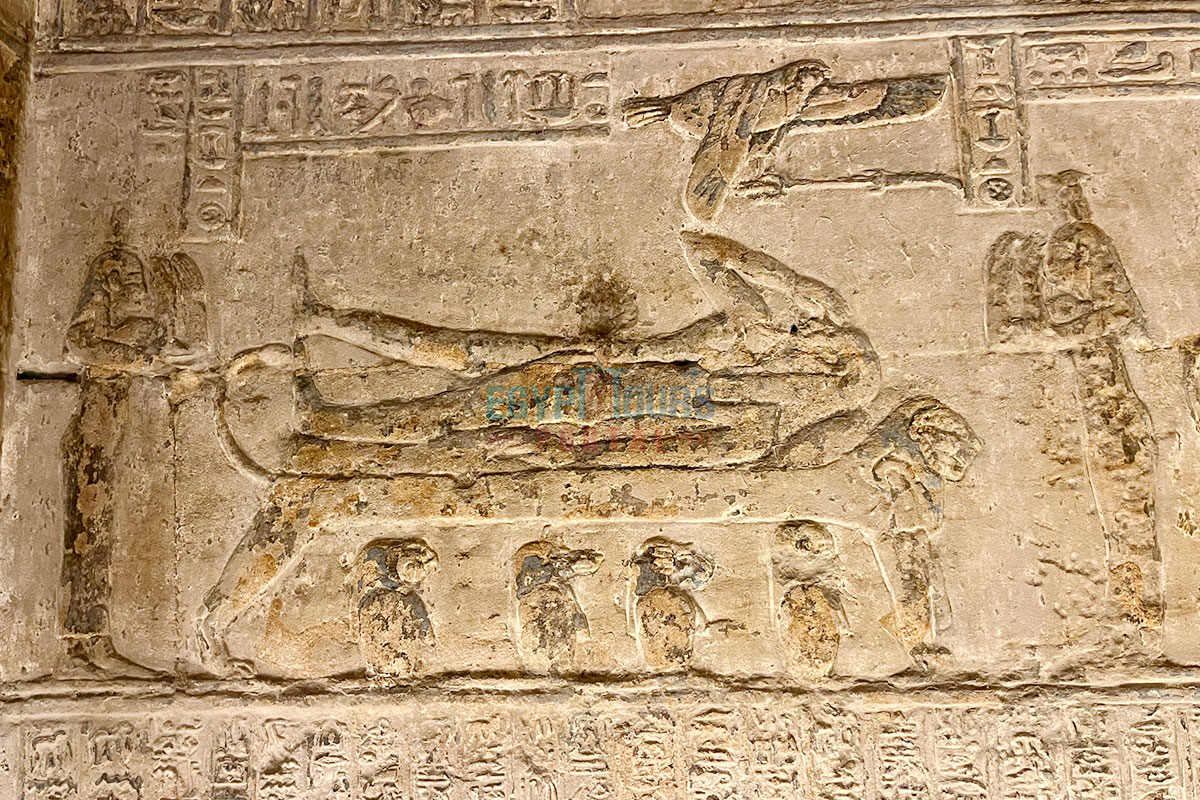
Egyptian art is rich in symbolism, often conveying religious or cosmological themes. The Dendera reliefs, for example, are more plausibly interpreted as depictions of creation myths than technological blueprints. The snake within the “bulb” represents the creative energy of Ra, while the lotus symbolizes birth and renewal. These interpretations align with Egyptian cosmology and religious practices.
Understanding ancient artifacts requires contextual analysis. Egyptologists rely on multidisciplinary approaches, combining archaeology, linguistics, and anthropology, to interpret findings. Misinterpretations often arise from imposing modern perspectives on ancient artifacts, such as viewing the Dendera reliefs through the lens of electrical engineering. Scholars stress the importance of cultural and historical context in avoiding such anachronisms.
By respecting the symbolic nature of Egyptian art and acknowledging the limitations of ancient technology, researchers can better appreciate the true accomplishments of this remarkable civilization.
The idea of ancient Egyptian electricity reflects modern fascination with a sophisticated civilization, but the evidence points to their reliance on symbolic art and advanced traditional methods, not technological breakthroughs akin to electricity. While the theories spark curiosity, they often overshadow the real ingenuity of the Egyptians, achieved without modern technologies.
The mystery and innovation of Egypt can be discovered in full detail by our great Egypt vacation and Nile Cruise which will try to solve some of the oldest and biggest puzzles in the world.
Private 4 Days Cairo Tour Packages 4 days Cairo Egypt tour package will offer a bles...
Tour Location: Cairo – Giza...
Stunning 5 Days Cairo and Alexandria Tour Package 5 days Cairo and Alexandria tour p...
Tour Location: Cairo/Giza/Alexandria...
Exceptional 6 Days Cairo, Luxor & Aswan Tour Package 6 days Cairo, Luxor & A...
Tour Location: Cairo/Giza/Aswan/Luxor...
Amazing 7 Days Cairo and Hurghada Holiday 7 Days Cairo & Hurghada holiday will e...
Tour Location: Cairo – Giza – Hurgh...
There is no concrete archaeological evidence to suggest that Ancient Egyptians had electricity. Claims are mostly speculative, based on interpretations of artifacts and reliefs like the "Dendera Light."
The "Dendera Light" refers to carvings in the Temple of Hathor at Dendera, which some interpret as depicting electric lamps. However, mainstream Egyptology views these carvings as symbolic representations of religious or mythological concepts.
The Baghdad Battery, found in modern-day Iraq, is a clay jar that may have functioned as a simple galvanic cell. While intriguing, there is no direct evidence linking it to Ancient Egyptian technology or electricity.
Some theories suggest parallels between Tesla’s ideas on wireless energy and the design of Egyptian pyramids and obelisks, but these claims are speculative and lack scientific validation.
There are theories that the pyramids were energy transmitters, but no credible evidence supports this. Most scholars agree that pyramids were primarily tombs and monumental structures.
Some suggest Ancient Egyptians used electricity for electroplating metals, citing artifacts with high craftsmanship. However, there is no definitive proof they employed electrical methods.
Beliefs stem from symbolic interpretations of artifacts, reliefs, and advanced architectural feats like the pyramids. Misinterpretations often arise from modern perspectives applied to ancient art.
Ancient Egyptians excelled in engineering, construction, and metallurgy. They used simple tools and innovative techniques for tasks like building pyramids, making jewelry, and crafting artifacts.
While it’s tempting to think ancient knowledge was lost, no reliable evidence supports the idea that Egyptians possessed electrical technologies.
Egyptologists attribute these theories to creative but speculative interpretations of artifacts and art. They emphasize the importance of context and historical understanding in evaluating such claims.
The reliefs are generally interpreted as symbolic representations of creation myths or rituals, rather than evidence of electrical devices.
Obelisks were primarily religious monuments dedicated to the sun god Ra. Theories about energy functions are speculative and not supported by historical evidence.
The controversy arises from the lack of direct evidence for ancient electrical technology, combined with modern fascination with ancient achievements and alternative theories.
The entire country of Egypt deserve to be explored with its every heavenly detail but there are places that must be seen before any other such as the breathtaking Hurghada's red sea, The wonders of Cairo the pyramids of Giza, the great sphinx, the Egyptian Museum, Khan El Khalili Bazaar, the wonders of Luxor like Valley of the Kings, Karnak & Hatshepsut temple and the wonders of Aswan such as Abu Simbel temples, Philea temple, Unfinished obelisk and The Wonders of Alexandria like Qaitbat Citadel, Pompey's Pillar and Alexandria Library. Read more about the best places to visit in Egypt.
If you want to apply for a Visa On Arrival that lasts for 30 days then you should be one of the eligible countries, have a valid passport with at least 6 months remaining and pay 25$ USD in cash, as for the E-Visa for 30 day you should have a valid passport for at least 8 months, complete the online application, pay the e-visa fee then print the e-visa to later be presented to the airport border guard. You could also be one of the lucky ones who can obtain a free visa for 90 days. Read more about Egypt travel visa.
Egypt has a variety of delicious cuisines but we recommend “Ful & Ta’meya (Fava Beans and Falafel)”, Mulukhiya, “Koshary”, a traditional Egyptian pasta dish, and Kebab & Kofta, the Egyptian traditional meat dish.
The best time to travel to Egypt is during the winter from September to April as the climate becomes a little tropical accompanied by a magical atmosphere of warm weather with a winter breeze. You will be notified in the week of your trip if the Climate is unsafe and if any changes have been made.
You should pack everything you could ever need in a small bag so you could move easily between your destinations.
We have been creating the finest vacations for more than 20 years around the most majestic destinations in Egypt. Our staff consists of the best operators, guides and drivers who dedicate all of their time & effort to make you have the perfect vacation. All of our tours are customized by Travel, Financial & Time consultants to fit your every possible need during your vacation. It doesn't go without saying that your safety and comfort are our main priority and all of our resources will be directed to provide the finest atmosphere until you return home.
You will feel safe in Egypt as the current atmosphere of the country is quite peaceful after the government took powerful measures like restructuring the entire tourist police to include all the important and tourist attractions in Egypt. Read more about is it safe to travel to Egypt.
Wear whatever feels right and comfortable. It is advised to wear something light and comfortable footwear like a closed-toe shoe to sustain the terrain of Egypt. Put on sun block during your time in Egypt in the summer to protect yourself from the sun.
The best activity is by far boarding a Nile Cruise between Luxor and Aswan or Vise Versa. Witness the beauty of Egypt from a hot balloon or a plane and try all the delicious Egyptian cuisines and drinks plus shopping in old Cairo. Explore the allure and wonders of the red sea in the magical city resorts of Egypt like Hurghada and many more by diving and snorkeling in the marine life or Hurghada. Behold the mesmerizing western desert by a safari trip under the heavenly Egyptian skies.
There are a lot of public holidays in Egypt too many to count either religious or nation, the most important festivals are the holy month of Ramadan which ends with Eid Al Fitr, Christmas and new years eve. Read more about festivals & publich holidays in Egypt.
Egypt is considered to be one of the most liberal Islamic countries but it has become a little bit conservative in the last couple of decades so it is advised to avoid showing your chest, shoulders or legs below the knees.
Arabic is the official language and Most Egyptians, who live in the cities, speak or understand English or at least some English words or phrases. Fewer Egyptians can speak French, Italian, Spanish, and German. Professional tour guides, who work in the tourism sector, are equipped to handle visitors who cannot speak Arabic and they will speak enough English and other languages to fulfill the needs of all our clients.
The fastest way is a car, of course, a taxi. If you are in Cairo ride a white taxi to move faster or you could board the fastest way of transportation in Egypt metro if the roads are in rush hour.
The temperature in Egypt ranges from 37c to 14 c. Summer in Egypt is somehow hot but sometimes it becomes cold at night and winter is cool and mild. The average of low temperatures vary from 9.5 °C in the wintertime to 23 °C in the summertime and the average high temperatures vary from 17 °C in the wintertime to 32 °C in the summertime. The temperature is moderate all along the coasts.
It is the home of everything a traveler might be looking for from amazing historical sites dating to more than 4000 years to enchanting city resorts & beaches. You will live the vacation you deserve as Egypt has everything you could possibly imagine.









